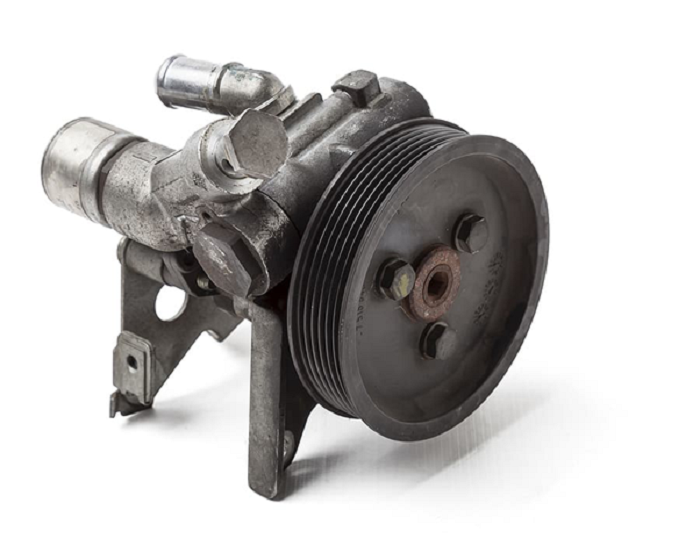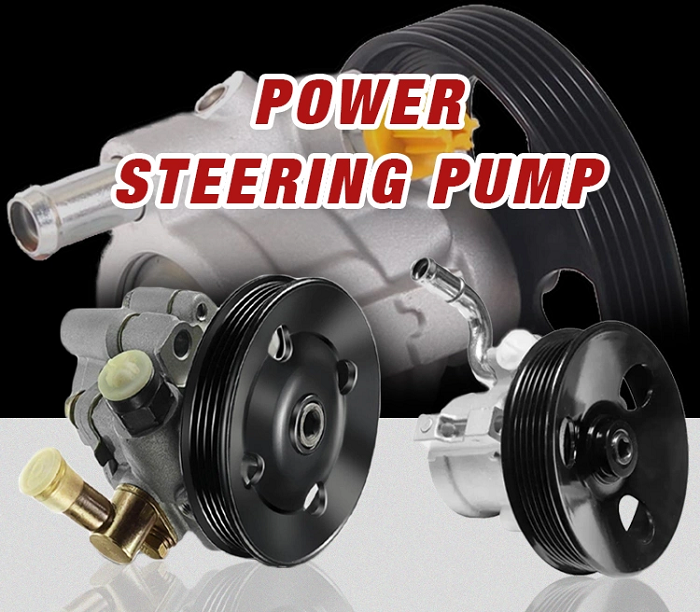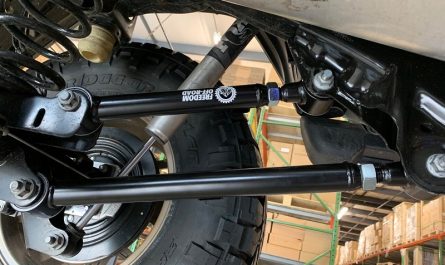What is a Power Steering Pump?
A vital component of the power steering pump replacement, which helps drivers maneuver their cars more easily, is the power steering pump. The pump, which is usually situated close to the engine, is in charge of producing hydraulic pressure, which aids in increasing the force applied to the steering wheel. The effort required to move the wheel is greatly decreased by this hydraulic help, especially when driving slowly or parking.
Read more: Top 5 Causes Of Serpentine Belt Failure
How the Power Steering Pump Works:
Hydraulic principles underpin the power steering pump’s operation. This is a detailed explanation of how it operates:
Fluid Intake: The reservoir, which is frequently situated close to the pump, provides the power steering fluid that the pump uses.
Pressure Generation: The pump is powered by a revolving device that is often attached to the engine via a serpentine belt. It puts pressure on the power steering fluid as it turns.
Fluid Distribution: The rack and pinion system or steering gear receives the pressurized fluid via hoses after that.
Assistance to Steering: Turning the steering wheel is made easier by the high-pressure fluid’s assistance in moving the rack or steering gear.
Return Flow: The fluid returns to the reservoir to be recirculated after aiding in steering.

Types of Power Steering Pumps:
Electric and belt-driven power steering pumps are the two main varieties. Here is a quick synopsis of each:
Belt-Driven Pumps: These are the most popular and are driven by an engine-connected serpentine or V-belt. They are frequently seen in many modern and vintage automobiles, and their designs are typically simpler.
Electric Pumps: These pumps are powered by an electric motor rather than a belt. They offer more precise control and are often used in newer vehicles with advanced steering systems.
Symptoms of a Failing Power Steering Pump:
Vehicle handling and safety can be greatly impacted by a malfunctioning power steering pump. These are typical symptoms to be aware of:
Difficulty Steering: If you find that it takes more effort than usual to turn the steering wheel, there may be an issue with the power steering pump.
Steering Wheel Noise: Grinding, whining, or squealing noises when turning the wheel can be signs of pump wear or low fluid levels.
Fluid Leaks: Leaks in the power steering fluid are frequently seen beneath the car as red or pink patches. Leaks may indicate worn seals or a faulty pump.
Warning Light: A dashboard warning light on certain cars turns on when there’s a problem with the power steering system.
Vibration or Pulsation: A malfunctioning pump or air in the power steering system could be the cause of vibrations or pulsations when the steering wheel is spinning.
Read more: Bike Kickstand Review Types Price Full Guide
Diagnosing Power Steering Pump Problems:
To properly resolve problems with the power steering pump, proper diagnosis is essential. Here’s a basic strategy:
Check Fluid Levels: Make that the amount of the power steering fluid is appropriate. Low fluid levels may be a sign of a leak or a requirement to top off the fluid.
Inspect for Leaks: Keep an eye out for any indications of fluid leaks near the reservoir, hoses, and power steering pump. Leaks should be fixed right away to stop additional harm.
Listen for Noises: Keep an ear out for any strange noises coming from the steering or pump. These sounds may offer hints about the type of issue at hand.
Test Steering Response: Assess the steering wheel’s responsiveness. Unusual resistance or trouble steering could indicate a failed pump.
Professional Diagnosis: It is advisable to seek the advice of a qualified mechanic who can do a comprehensive inspection and offer an accurate diagnosis if you are unable to identify the problem.
Maintenance and Care of the Power Steering Pump:
Your power steering pump’s lifespan can be increased and optimal performance can be guaranteed with routine maintenance. Here are some pointers:
Regular Fluid Checks: Check the power steering fluid level on a regular basis and top it off if needed. Make use of the fluid type that is suggested for your car.
Fluid Replacement: Power steering fluid may get tainted or lose its efficiency with time. Observe the recommended intervals for fluid replacement as stated by the manufacturer of your vehicle.
Inspect Hoses and Belts: Check the belts and hoses for the power steering system on a regular basis. Replace any that appear worn down or damaged.
Address Leaks Promptly: To prevent more harm to the system, have any leaks fixed as soon as you discover them.
Avoid Oversteering: The power steering pump may be unnecessarily stressed by severe or excessive steering movements. Make smoother driving to lessen deterioration.

Replacing a Power Steering Pump:
You will need to replace your power steering pump pulley if it is beyond repair. An outline of the replacement procedure is provided below:
Preparation: Collect the required equipment and a fresh power steering pump. Make sure the engine is cold and the car is parked on a flat surface.
Drain Fluid: Disconnect the hoses from the pump and take out the power steering fluid from the reservoir.
Remove the Old Pump: Take off the power steering pump’s mounting bolts and carefully take it out of the automobile.
Install the New Pump: Reconnect the hoses, bolt the new pump firmly into place, and adjust its position. Make that every connection is secure and free of leaks.
Refill and Bleed the System: After adding the proper fluid to the power steering reservoir, bleed the system to get rid of any remaining air. This guarantees optimal functioning and steering efficiency.
Test Drive: After installation, test drive the car to make sure the steering is responsive and smooth and the new pump is operating as intended.
Cost Considerations:
The power steering pump replacement cost might differ based on a number of variables, including the vehicle’s make and model, labor costs, and whether you select an aftermarket or original equipment manufacturer (OEM) item. A power steering pump typically costs between $100 and $300, with an additional $100 to $200 for labor.
Conclusion:
Because it makes steering simpler and more responsive, the electric power steering pump is essential to the whole driving experience. Maintaining this crucial component can assist to assure its longevity and dependability by being aware of its operation, identifying potential failure signs, and carrying out routine maintenance. Your car’s performance and safety can be greatly affected by giving the power steering pump the care and attention it needs, whether it’s a minor problem or requires a total replacement.
You may keep effortless and smooth steering and reduce tension during your drive by being proactive and knowledgeable about the power steering pump.


